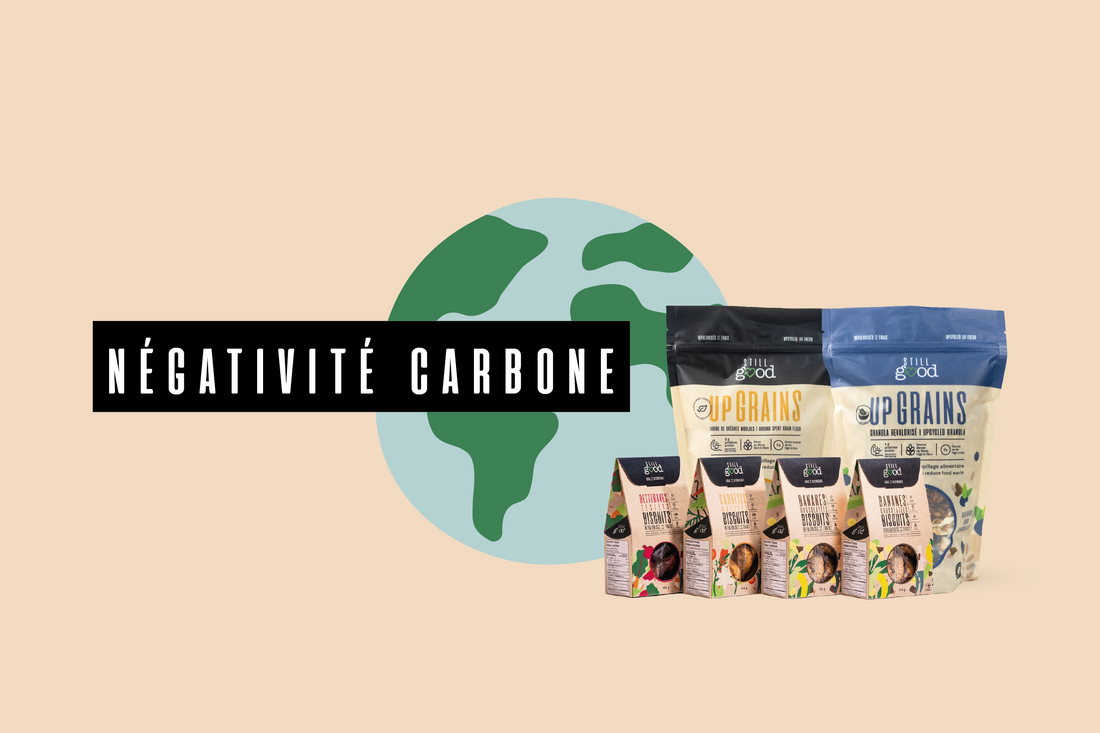Still Good is proud to have achieved a negative carbon footprint for over a year now. But that’s not all! We are committed to making a positive impact on the planet and we believe we can always go further. Our objective is to speed up the transition into a sustainable food system.
What does it mean to be carbon negative?
We often hear about carbon neutrality, which is when the equivalent amount of greenhouse gases (GHGs) is removed from the environment for every amount that is created. On the other hand, carbon negativity means removing more carbon dioxide from the atmosphere than you emit.
The impact of food waste on GHGs
On a global scale, one-third of the food that is produced is wasted each year. That’s 1.3 billion tons of food going to landfills. This is the equivalent of 3.3 billion tons of CO2. If “food waste” was a country, it would be the third-biggest polluter in the world.
Why does food waste have such a big environmental impact? Simply because throwing away food means throwing away a resource that required energy and CO2 to produce, from growing to packaging to transporting to storing.
Upcycling to reduce the food industry’s carbon footprint
The food industry can become more sustainable if we collectively stop wasting. By upcycling food by-products, we not only reduce GHG emissions but also make better use of the food being produced.
Collectively, we must accelerate the transition to a sustainable food system. Sill Good wants to be the catalyst for this change. How? By creating carbon-negative food products using the food by-products of our partners.
Using our technology to transform waste into nutritious and tasty ingredients, we help make the most of food production and positively influence the food industry’s carbon footprint.
Do you create food by-products? Collaborate with Still Good!
Sources
FAO, Food wastage footprint: Impacts on natural resources - Summary report, [Fichier PDF], 2013.

